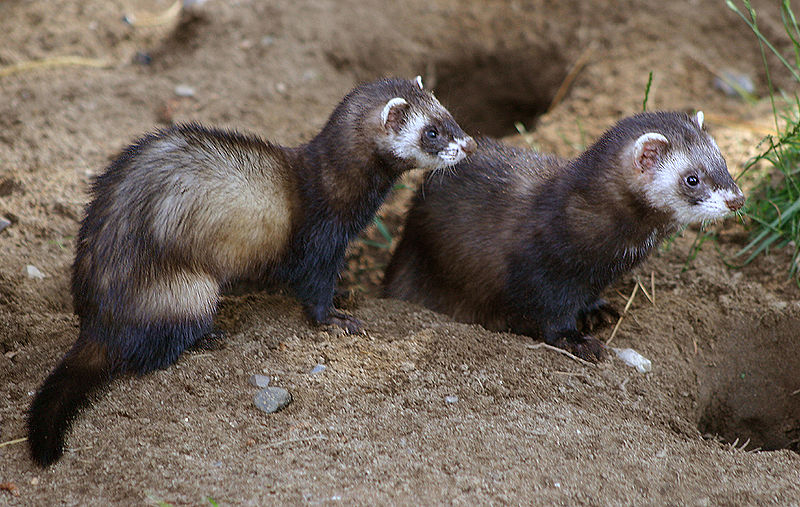Just about every child will want to have a pet of their own at some point as they grow up, whether it’s because a friend wins a new goldfish at the fair, or a movie featuring talking guinea pigs comes to theaters. It’s important to consider, before buying your child a pet, that caring for a living thing is a big job, no matter how small the animal may be. All pets can feel pain, loneliness, boredom, and fear and will suffer if not cared for properly. It is a good idea to research the pet your child is interested in to make sure it is right for them before bringing a the new pet home. There are several popular first time pets that parents visiting us inquire about most often. I thought it might be helpful to provide an introduction and a brief overview of what to expect from these animals, beginning with hamsters, gerbils, guinea pigs and rats. Read More »
Category Archives: Small Pets
Feed SubscriptionResearch Update – Domestication has not Dulled the Guinea Pig’s Intelligence
 The Guinea Pig has been domesticated for over 5,000 years (please see article below). It’s no secret that domestication can radically change an animal’s appearance – most taxonomists now consider the Domestic Dog to be a subspecies of the Gray Wolf, and not a distinct species – but you’d never guess that when viewing a Maltese and a Wolf side-by-side! Read More »
The Guinea Pig has been domesticated for over 5,000 years (please see article below). It’s no secret that domestication can radically change an animal’s appearance – most taxonomists now consider the Domestic Dog to be a subspecies of the Gray Wolf, and not a distinct species – but you’d never guess that when viewing a Maltese and a Wolf side-by-side! Read More »
Rats as Pets – Looking Past Stereotypes and Misconceptions – Part 2
Now let’s talk a little about what you’ll need if you want to keep rats as pets.

All in all, rats need large wire enclosures with plenty of levels or lofts for climbing. You may want to look at cages designed for ferrets. Cages designed for hamsters and other small rodents will not be adequate for the much larger and stronger rat. The ideal cage for two adult rats will be at least 2ft L x 1ft W x 3ft H, but this is the minimum and bigger is always better. Make sure the cage bars are less than one inch apart so that small rats can’t get out. If their head fits through, their body will too! Also keep in mind that the size of the cage depends on the number of rats you plan to keep. They are very active animals and will utilize all the space you are willing to provide. Read More »
The Ferret’s Long Journey – European Polecat to Human Companion
 Ferrets seem so “mainstream” these days that it’s easy to forget their unusual natural and “unnatural” history. Please read on…
Ferrets seem so “mainstream” these days that it’s easy to forget their unusual natural and “unnatural” history. Please read on…
Classification: Just What Exactly is a Ferret?
The domestic ferret is classified in the order Carnivora, family Mustelidae, along with 75+ species of weasels, otters, skunks, badgers, wolverines and related animals.
Ranging in size from the least weasel (which, at 2.5 ounces in weight, is the world’s smallest carnivore) to the 7-foot-long, 100 pound Giant Otter, the family Mustelidae includes familiar animals such as skunks and sea otters as well as the little-studied Chinese Ferret-Badgers and tayras. Read More »
Rats as Pets – Looking Past Stereotypes and Misconceptions
 Of all of the animals we carry in Critter Corner’s Small Animal Room, rats evoke the biggest reaction. Most people who see pet rats for sale cringe at the idea of having one in their home, let alone as a well loved companion. Who would want a pet rat? What could you possibly get out of having a pet rat? Well, despite the stereotype of rats being flea carrying bringers of disease, domesticated pet rats are clean, intelligent, personable animals that rarely bite, can be trained to do tricks, and make wonderful pets for gentle children and adults alike. Read More »
Of all of the animals we carry in Critter Corner’s Small Animal Room, rats evoke the biggest reaction. Most people who see pet rats for sale cringe at the idea of having one in their home, let alone as a well loved companion. Who would want a pet rat? What could you possibly get out of having a pet rat? Well, despite the stereotype of rats being flea carrying bringers of disease, domesticated pet rats are clean, intelligent, personable animals that rarely bite, can be trained to do tricks, and make wonderful pets for gentle children and adults alike. Read More »
The Guinea Pig or Cavy – Wild Ancestors and History in Captivity
When the Spanish conquistadors breached the Andes Mountains and entered Peru, they found that the Inca people were breeding an animal unlike any that had ever been seen in Europe. The wild ancestor of these rodents, later christened guinea pigs or cavies, was lost in antiquity, as cavies had been domesticated as a food source 5,000 or more years earlier. Read More »
 That Pet Blog That Pet Place Pet Blog
That Pet Blog That Pet Place Pet Blog
